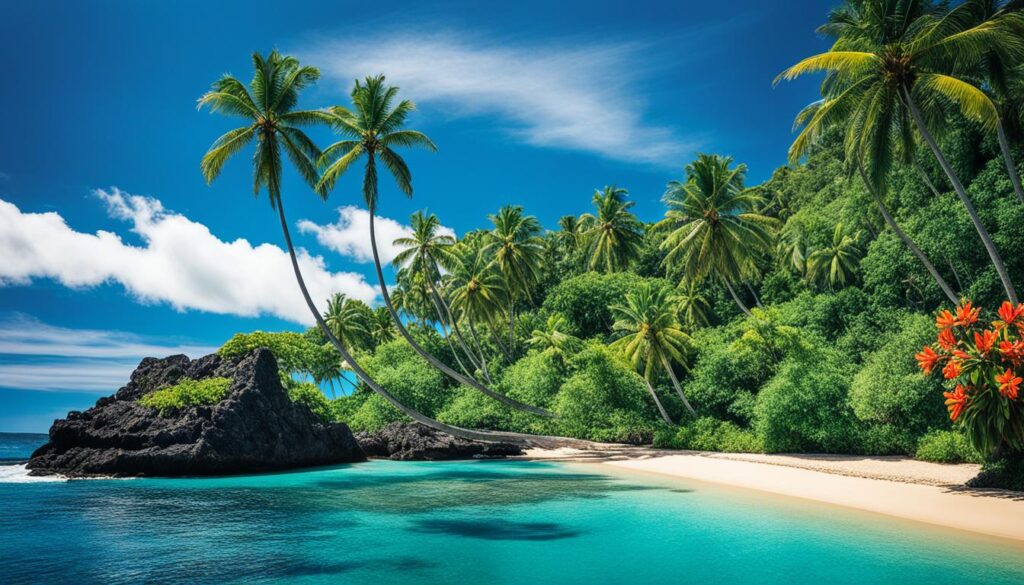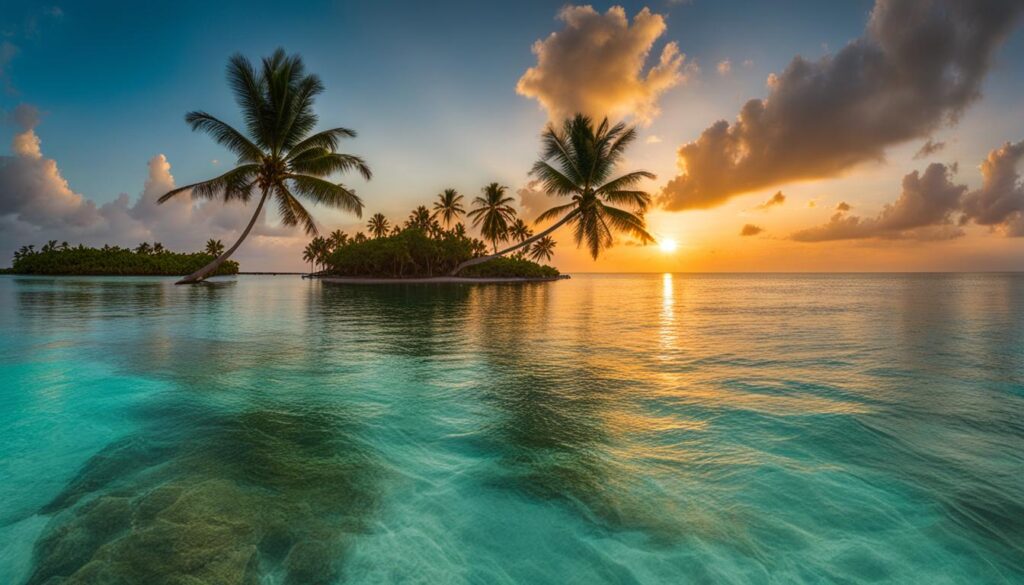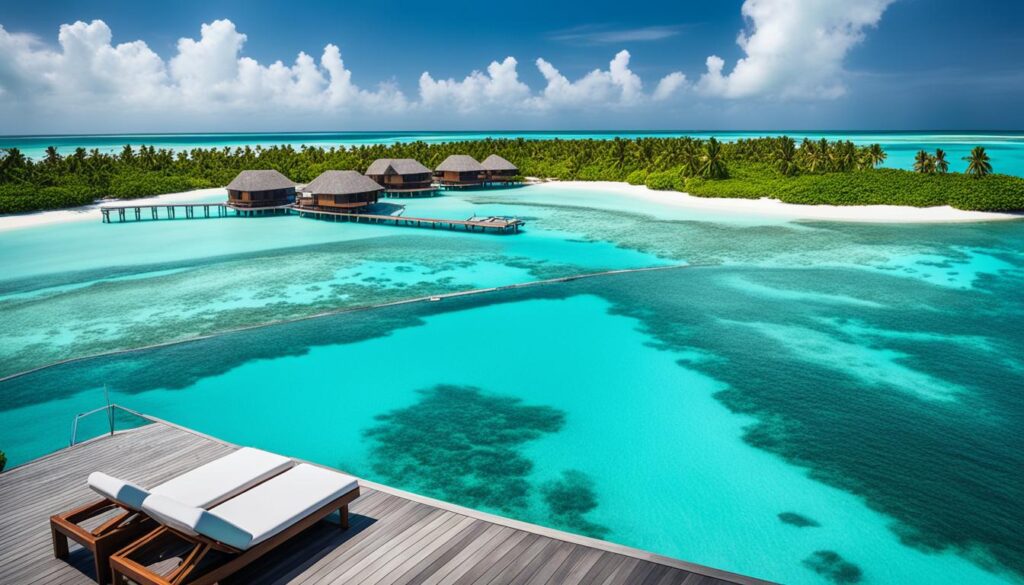The United States’ two non-continental states are both laden with reasons why paying them a visit should be high on your list of priorities, but what if you absolutely had to choose one of them? Do you opt for sun-soaked beaches, densely forested volcanic mountains, and sipping drinks from a coconut shell? Or do you pull up your hood, grit your teeth against the cold, and hike in some of the most beautiful and dangerous terrain the world has to offer?
Let’s launch right in with the biggest draw of either spot: their immense natural beauty. Volcanic, tropical Hawaii and the icy mountains and deep lakes of Alaska couldn’t be more different, but neither is without considerable charm. The beauty of Hawaii has been well documented. Its verdant mountains, its wind-swept cliffs, its white sandy beaches, and the volcanoes that make it all possible are all ample reason to pay a visit to the 50th state. That sounds like a landslide, but let’s hear Alaska out. The glaciers, mountains, and arctic tundra of Alaska might not scream paradise, but you’d be hard pressed to find a place on earth with more stark beauty. Both countries boast a slew of national parks to preserve the beauty, so you’re spoiled for choice when you do visit. For me? I’m giving the edge to the snow swept, big sky country that is Alaska.
Key Takeaways:
- Fiji and Hawaii are both tropical paradises with unique natural beauty
- Hawaii is known for its verdant mountains, wind-swept cliffs, and white sandy beaches
- Alaska boasts glaciers, mountains, and arctic tundra that offer a stark and breathtaking beauty
- Both destinations have a range of national parks to explore
- Personal preference plays a key role in deciding the better choice
Relaxation
What sounds more relaxing to you? Tropical songbirds chirruping as you take breakfast on a sea-view balcony with a warm spring breeze tickling your nethers, or wearing three layers and trekking out into the frozen wilds to do a wee bit of moose spotting? I don’t doubt one or two of you opted for the second choice, but I daresay the vast majority would take the beach over the ice any day of the week.
Hawaii’s agreeable climate and excellent tourist infrastructure make it a logical choice if you’re looking for a relaxing few days or weeks away. Hell, the place is renowned for its laid-back lifestyle! You’re not going to get that at fifty below in a place where you only lie down to die in the snow.
I’m not saying that Alaska couldn’t be relaxing, mind. A mountain cabin with a crackling fire and the serenity of a snowy forest outside sounds wonderfully peaceful to me, but there’s likely to be a lack of spas and catered resorts. In this one, Hawaii gets the edge for me.
Adventure
When it comes to seeking adventure, both Fiji and Hawaii have something unique to offer. Hawaii boasts a range of exhilarating activities for adrenaline junkies, such as skydiving, bungee jumping, and various water sports. The tropical paradise is well-suited for those looking for conventional adventure sports in a tourist-oriented setting.
On the other hand, if you crave a truly authentic and rugged adventure, Alaska is the ultimate playground. Its harsh and wild environment attracts survivalists and nature enthusiasts who want to experience the untamed wilderness. Imagine loading up your backpack and venturing into the Alaskan backcountry, encountering breathtaking landscapes and untouched nature along the way. There are even companies offering camping and hiking tours for those who prefer guided adventures.
“Surf’s up, dude! Hang ten! Gnarly!”

Hawaii: Manufactured Excitement
While Hawaii offers thrilling activities, some argue that they can feel manufactured and catered to tourists. The safety measures and infrastructure in tourist-oriented places may detract from the raw excitement sought by true adventure enthusiasts. Climbing a volcano in Hawaii is undoubtedly awe-inspiring, but can it compare to the adrenaline rush of encountering a bear or challenging a glacier in Alaska?
Alaska: Where the Real Adventure Awaits
To me, real adventure lies in the remote and untouched landscapes of Alaska. The Alaskan wilderness pushes the boundaries and offers experiences that cannot be found in glossy brochures. Whether it’s hiking through rugged mountains, spotting wildlife, or immersing yourself in the vastness of its landscapes, Alaska is the epitome of adventure. If you seek the thrill of exploring uncharted territories and embracing the unknown, Alaska is the clear choice.
Accessibility
Both Alaska and Hawaii are easily accessible from the continental United States, making them attractive destinations for travelers. Whether by plane or cruise ship, you have convenient transportation options to reach these tropical paradises. Alaska is renowned for its picturesque cruises, offering stunning views of glaciers, mountains, and wildlife. On the other hand, cruises to Hawaii provide a decadent and relaxed atmosphere, perfect for those seeking a tranquil vacation. If you’re interested in booking a cruise to either destination, my friends at Cruise 1st can help you find the best deals.
However, it’s important to note that driving to Hawaii is not an option, as it is a non-continental state. In contrast, reaching Alaska by car from the United States involves crossing the Canadian border twice, which adds complexity to the journey. Although Alaska may seem more accessible due to its connection to the continental United States, accessibility is not just about physical transportation.
Accessibility also encompasses having access to the comforts of home, especially for families and young people. Hawaii, with its developed cities, malls, resorts, and shopping options, offers the amenities that cater to a wide range of preferences. It is the perfect destination for those traveling with young children or seeking a vibrant nightlife scene. Hawaii provides a seamless blend of adventure and modern conveniences that ensure a memorable and convenient vacation experience.
On the other hand, Alaska offers a different kind of accessibility – an escape from the hustle and bustle of modern life. It draws travelers who are looking to disconnect from the urban environment and immerse themselves in nature’s beauty. With its vast wilderness and fewer commercial establishments, Alaska provides a unique opportunity to explore pristine landscapes and enjoy a more secluded experience. If you are seeking a tranquil getaway away from the commercialized amenities, Alaska might be the ideal choice for you.

In summary, both Alaska and Hawaii offer accessibility options that suit different travel preferences. Alaska’s cruises provide unparalleled views and access to its breathtaking natural wonders. Hawaii, with its developed cities and amenities, ensures a comfortable and convenient experience for families and young people. Whether you prioritize adventurous exploration or modern comforts, both destinations offer unique accessibility advantages. Ultimately, the choice between Alaska and Hawaii depends on your personal preferences and the type of travel experience you desire.
History & Culture
Both Alaska and Hawaii are renowned for their natural beauty, but their rich histories and diverse cultures make them more than just tropical paradises. While both states offer museums, galleries, and other cultural attractions, my preference leans towards the fascinating heritage of Hawaii.
Prior to becoming part of the United States, the Hawaiian islands formed a kingdom and share a deep connection with the Polynesian Pacific islanders. This vibrant cultural heritage provides a unique opportunity to delve into the island’s past and experience its ancient traditions.
One notable historical site in Hawaii is the Mookini Heiau, a 1500-year-old temple that offers a glimpse into the island’s spiritual practices. Additionally, Molokai, known as the “Friendly Isle,” offers a chance to experience Hawaiian life as it once was, with claims like “No building is higher than a palm tree” and “Aloha is not just a word, but a way of life.”
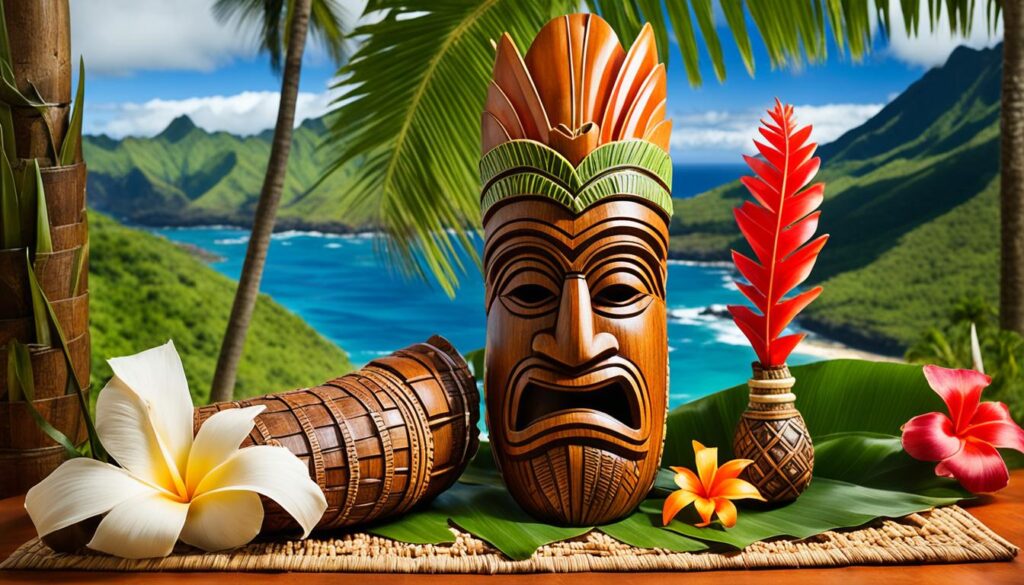
The allure of getting up close and personal with such an ancient culture is simply captivating. Unfortunately, Alaska’s history unfolds differently, with fewer dynasties and less visible traces of native populations. As a result, the opportunity for this level of cultural immersion is not as accessible in Alaska.
Galleries and Museums
While both Alaska and Hawaii have galleries and museums dedicated to art, history, and cultural artifacts, Hawaii’s offerings often focus on the native peoples and their traditions. The Bishop Museum in Honolulu, for example, showcases the rich heritage of the Hawaiian islands with exhibits on traditional arts, artifacts, and historical displays.
Alaska, on the other hand, boasts several exceptional museums, such as the Anchorage Museum, which explores the history, art, and culture of Alaska, including its native populations. While Alaska’s museums are undoubtedly fascinating, the emphasis on native heritage is more prevalent in Hawaii.
Cost of Stay
One important factor to consider when planning a trip is the cost of staying in either Fiji or Hawaii. While both destinations offer a range of accommodations, from budget-friendly to luxury resorts, it’s important to consider how much you’re willing to spend.
According to a study by TravelMag.com, the average cost of a week-long stay for two people in Fiji is around $5,710, including accommodation, meals, and activities. In Hawaii, the overall cost can vary depending on the specific island and season, but it tends to be higher than Fiji’s average.
It’s worth noting that traveling during peak tourist season or staying in high-end resorts can significantly increase the cost of your stay in both destinations. However, Fiji generally offers a more affordable option for travelers on a budget.
Comparison of Cost for a Week-long Stay in Fiji and Hawaii
| Costs | Fiji | Hawaii |
|---|---|---|
| Accommodation | $1,000 – $3,000 | $1,500 – $5,000 |
| Meals | $200 – $500 | $300 – $700 |
| Activities | $200 – $500 | $300 – $800 |
| Total | $1,400 – $3,900 | $2,100 – $6,500 |
*Note: The costs mentioned are approximate and can vary based on individual preferences, specific accommodations, and seasonal fluctuations.
When comparing the cost of accommodations, meals, and activities, Fiji generally offers a more affordable option compared to Hawaii. However, it’s essential to consider your budget and travel priorities when making a decision. If luxury resorts and higher-end experiences are important to you, Hawaii may be worth the additional expenses. On the other hand, Fiji provides an opportunity to enjoy a tropical vacation while still being mindful of your budget.
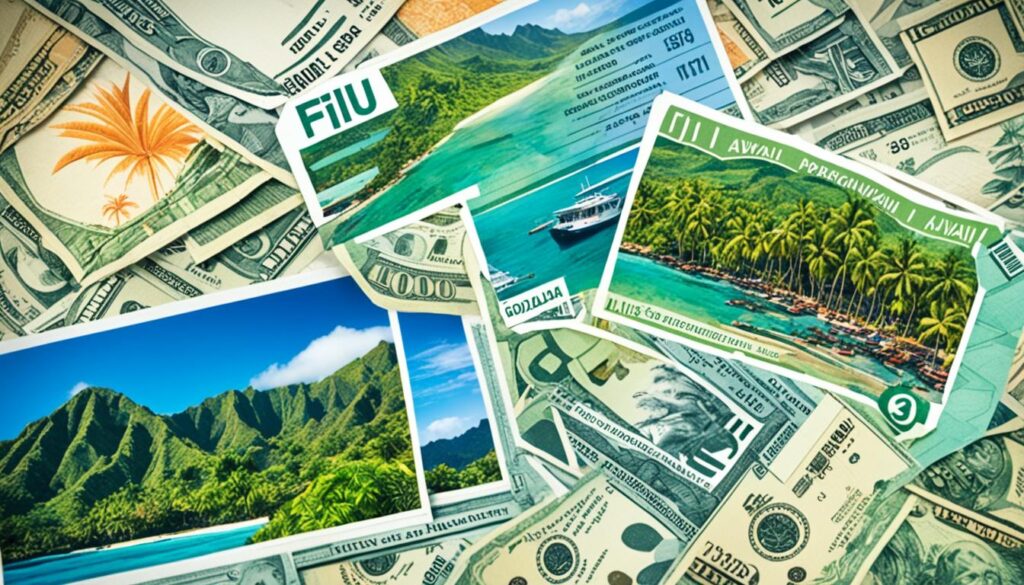
Transportation
Another aspect to consider is the transportation options available in Fiji and Hawaii. Both destinations offer various means of transportation to help you get around and explore.
In Fiji, you can find taxis, bicycles, buses, and boats as common modes of transportation. Additionally, speedboat and ferry services are available for inter-island travel. These options provide flexibility and convenience when navigating the islands.
In Hawaii, you can also find taxis, bicycles, and buses as common options for getting around, especially on the larger islands like Oahu and Maui. These modes of transportation are suitable for shorter distances and allow you to soak in the scenic beauty of the islands.
However, due to its geographical location, Hawaii also offers the option of inter-island flights for more convenient travel between the different islands. This allows you to maximize your time and explore multiple islands during your visit.
It’s important to consider the availability and cost of transportation within each destination. While Fiji’s transportation options may not be as extensive as Hawaii’s, they are still sufficient for getting around and enjoying the local attractions. On the other hand, Hawaii’s transportation network is more developed and provides greater accessibility for travelers.
Whether you choose Fiji or Hawaii, planning your transportation in advance will ensure a smooth and enjoyable experience during your tropical getaway.
| Transportation Options | Fiji | Hawaii |
|---|---|---|
| Taxis | ✔️ | ✔️ |
| Bicycles | ✔️ | ✔️ |
| Buses | ✔️ | ✔️ |
| Boats | ✔️ | – |
| Speedboat | ✔️ | – |
| Ferry | ✔️ | – |
| Inter-Island Flights | – | ✔️ |
*Availability may vary. Please check local transport services for the most up-to-date information.
Attractions
When it comes to attractions, both Fiji and Hawaii offer a plethora of options to suit different interests and preferences.
Fiji is renowned for its stunning beaches, crystal-clear waters, and vibrant coral reefs, making it an ideal destination for snorkeling, diving, and relaxing on the beach. Additionally, Fiji’s lush mountains and national parks provide opportunities for hiking, bird-watching, and exploring the island’s natural beauty.
Hawaii, on the other hand, is known for its dramatic landscapes, including volcanoes, mountains, and waterfalls. The islands also offer a rich cultural heritage, with ancient temples, traditional villages, and historical landmarks to explore.
“The more you know about the past, the better prepared you are for the future.” – Theodore Roosevelt
For wildlife enthusiasts, Hawaii is home to unique species such as sea turtles, dolphins, and humpback whales, which can be observed through various eco-tourism activities.
Whether you’re seeking relaxation, adventure, or cultural experiences, both Fiji and Hawaii have attractions to offer.
| Attractions | Fiji | Hawaii |
|---|---|---|
| Beaches | ✔️ | ✔️ |
| Mountains | ✔️ | ✔️ |
| National Parks | ✔️ | ✔️ |
| Cultural Sites | ✔️ | ✔️ |
| Landmarks | ✔️ | ✔️ |
| Wildlife | ✔️ | ✔️ |
| Volcanoes | ✔️ |
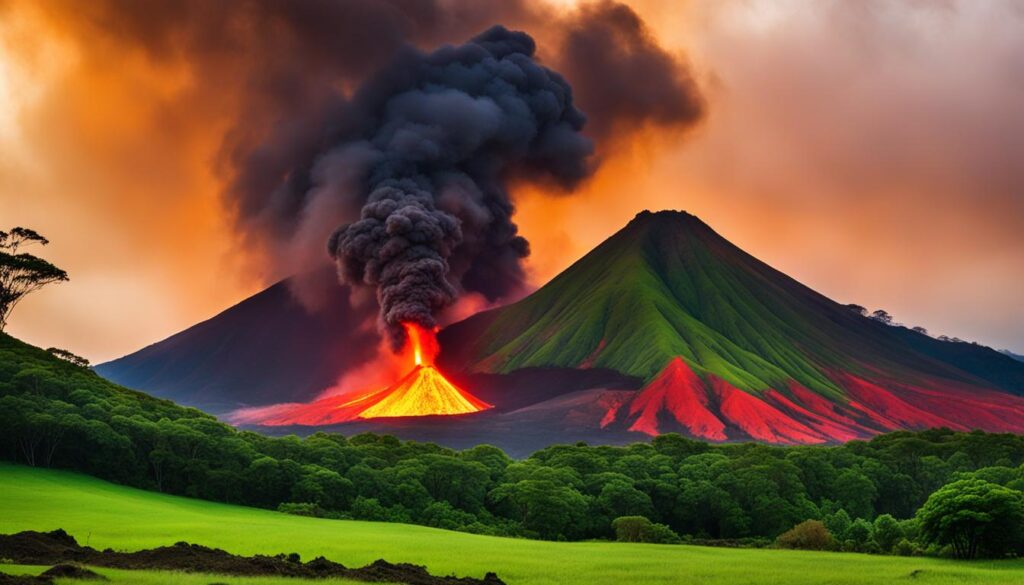
Experience the wonders of nature and immerse yourself in the rich cultural heritage of both Fiji and Hawaii. The choice is yours!
Cuisine
A crucial factor in choosing a vacation destination is the culinary experience it offers. Both Fiji and Hawaii boast a diverse culinary scene that showcases a fusion of traditional and international flavors.
In Fiji, you can indulge in traditional Fijian dishes such as lovo (an earth oven feast), kokoda (a raw fish dish marinated in coconut milk), and dal (lentil curry). The cuisine in Fiji often revolves around fresh seafood, tropical fruits, and locally sourced produce.
In Hawaii, you can savor the flavors of a fusion cuisine that combines traditional Hawaiian dishes with influences from Japanese, Chinese, Filipino, and Polynesian cuisines. Popular Hawaiian dishes include poi (a paste made from taro root), kalua pig (smoked pork), and poke (marinated raw fish salad).
Both destinations offer a range of dining options, from street food stalls to high-end restaurants, ensuring that you’ll find something to satisfy your palate.
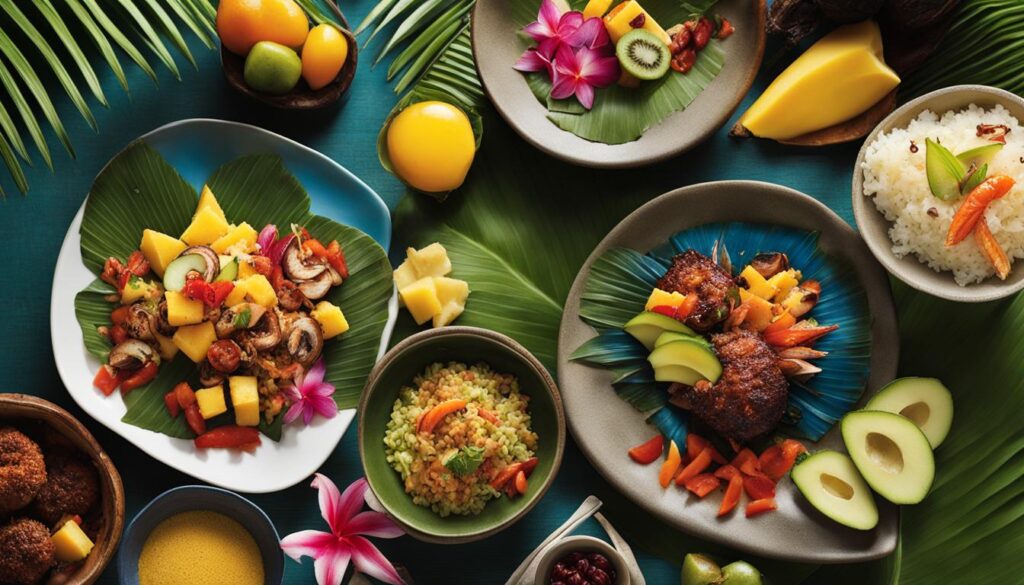
| Fiji | Hawaii |
|---|---|
| Fijian dishes | Hawaiian fusion cuisine |
| Traditional dishes: lovo, kokoda, dal | Popular dishes: poi, kalua pig, poke |
| Emphasis on fresh seafood and tropical fruits | Blend of Hawaiian, Japanese, Chinese, Filipino, and Polynesian flavors |
| Local produce | Influences from various cultures |
Conclusion
In conclusion, both Fiji and Hawaii offer unique experiences and attractions that make them worthy travel destinations. Whether you’re seeking relaxation on pristine beaches, adventure in stunning natural landscapes, or cultural immersion in vibrant communities, both destinations have something to offer.
Fiji’s affordability and authentic cultural experiences make it an attractive option for budget-conscious travelers looking to explore a diverse range of activities. From lounging on white sandy beaches to snorkeling in crystal-clear waters, Fiji’s tropical paradise offers a laid-back and tranquil experience. With its rich Polynesian heritage and warm hospitality, Fiji provides a glimpse into a vibrant and welcoming culture.
On the other hand, Hawaii’s natural beauty, accessibility, and rich cultural heritage make it an ideal choice for those seeking a well-developed tourist infrastructure and a wide range of attractions. The volcanic landscapes, majestic mountains, and dramatic waterfalls create a stunning backdrop for outdoor activities such as hiking, surfing, and exploring national parks. Immerse yourself in Hawaiian culture, visit historical landmarks, and indulge in a fusion of traditional and international cuisines.
Ultimately, the decision between Fiji and Hawaii depends on your personal preferences, budget, and travel goals. Both Fiji and Hawaii guarantee a tropical paradise experience that will leave you with unforgettable memories. So, whether you choose the affordability and cultural authenticity of Fiji or the accessibility and diverse attractions of Hawaii, you can’t go wrong with either destination.
FAQ
What are the major differences between Fiji and Hawaii?
Fiji and Hawaii have different geographical features, climates, cultures, and attractions. Fiji is known for its tropical beaches and crystal-clear waters, while Hawaii offers volcanic landscapes and dramatic mountains. Both destinations have unique cultural experiences and diverse culinary scenes.
Which destination is more relaxing, Fiji or Hawaii?
Hawaii is known for its agreeable climate, laid-back lifestyle, and excellent tourist infrastructure, making it a logical choice for a relaxing vacation. Fiji also offers a peaceful and tranquil atmosphere with its pristine beaches and tropical surroundings.
What kind of adventure activities can be enjoyed in Fiji and Hawaii?
Hawaii offers a range of adventurous activities such as skydiving, bungee jumping, water sports, and hiking. Fiji also provides opportunities for outdoor adventures like snorkeling, diving, hiking, and exploring its lush mountains and national parks.
How do Fiji and Hawaii compare in terms of accessibility?
Both Fiji and Hawaii are easily accessible by plane or cruise ship from the continental United States. Hawaii offers more developed transportation options within the islands, including taxis, bicycles, buses, and inter-island flights. Fiji has taxis, buses, boats, and speedboat/ferry services for inter-island travel.
What cultural attractions can be found in Fiji and Hawaii?
Fiji and Hawaii both offer museums, galleries, and cultural sites to explore. Fiji has a fascinating native heritage and Polynesian influences, with opportunities to visit ancient temples and experience traditional Fijian life. Hawaii has a rich cultural heritage with ancient temples, traditional villages, and historical landmarks showcasing its unique Polynesian and Asian influences.
How much does it cost to stay in Fiji or Hawaii?
The cost of staying in Fiji is generally more affordable compared to Hawaii. The average cost of a week-long stay for two people in Fiji, including accommodation, meals, and activities, is around ,710. Hawaii’s overall cost can be higher, especially during peak tourist seasons or when staying in high-end resorts.
What are the transportation options available in Fiji and Hawaii?
In Fiji, common transportation options include taxis, bicycles, buses, and boats. Speedboat and ferry services are also available for inter-island travel. Hawaii offers taxis, bicycles, buses, and inter-island flights for more convenient travel between the islands.
What attractions can be found in Fiji and Hawaii?
Both Fiji and Hawaii offer a wide range of attractions. Fiji is renowned for its stunning beaches, vibrant coral reefs, lush mountains, and national parks, perfect for snorkeling, diving, hiking, and exploring nature. Hawaii offers dramatic landscapes with volcanoes, mountains, waterfalls, and a rich cultural heritage, including ancient temples, traditional villages, and historical landmarks. Wildlife enthusiasts can observe unique species such as sea turtles, dolphins, and humpback whales.
What kind of cuisine can be enjoyed in Fiji and Hawaii?
In Fiji, you can indulge in traditional Fijian dishes like lovo (earth oven feast), kokoda (raw fish marinated in coconut milk), and dal (lentil curry). Hawaii offers a fusion cuisine combining traditional Hawaiian dishes with influences from Japanese, Chinese, Filipino, and Polynesian cuisines. Popular Hawaiian dishes include poi (taro root paste), kalua pig (smoked pork), and poke (marinated raw fish salad).
What factors should I consider in choosing between Fiji and Hawaii?
When deciding between Fiji and Hawaii, consider the differences in climate, geographical features, attractions, cost, cultural experiences, and accessibility. Choose the destination that aligns with your preferences, budget, and travel goals. Both Fiji and Hawaii offer tropical paradise experiences with unique charms.
